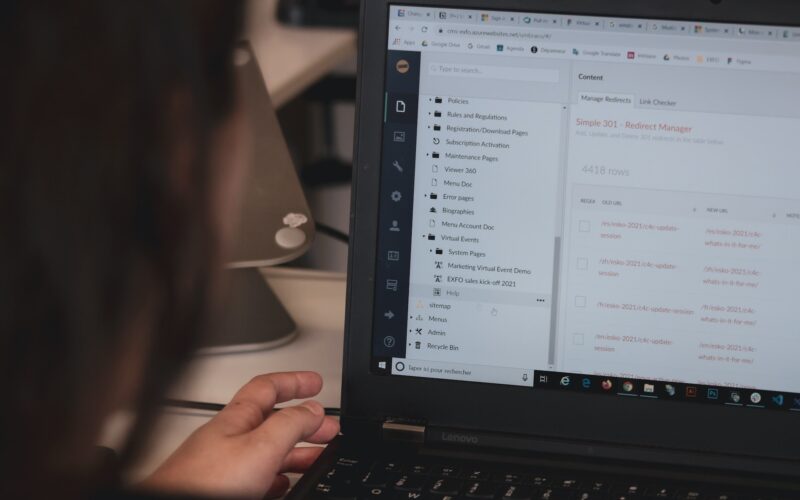When it comes to building modern web applications, there are a variety of tools and technologies available to developers. Two popular approaches are headless CMS and APIs. While they may seem similar at first glance, there are significant differences between these two approaches that can have a significant impact on the success of a project.
A headless CMS is a content management system that allows content creators to manage content in a central location, without the constraints of a specific front-end interface. A headless CMS provides content via an API, which can then be consumed by any application or platform. This approach provides developers with more flexibility, allowing them to build custom front-ends or use different programming languages.
An API, on the other hand, is a set of programming instructions that allows two or more applications to communicate with each other. APIs can be used to share data between different applications, or to provide functionality to other developers. APIs can take many forms, such as REST, GraphQL, or SOAP, and can be used in a wide range of applications, from e-commerce to social media.
Understanding the differences between headless CMS and APIs is essential for developers who are looking to build modern web applications. In this article, we will explore the key differences between these two approaches, their advantages and disadvantages, and the use cases where each approach is most suitable.
Headless CMS
A headless CMS is a content management system that separates the content creation and management functionality from the presentation layer. This means that content creators can create and manage content in a central location, without the constraints of a specific front-end interface. The content is then delivered through an API to any application or platform, such as a website, mobile app, or digital kiosk.
Compared to traditional CMS, which has a tightly coupled front-end and back-end, a headless CMS provides developers with more flexibility. They can use any programming language, framework, or front-end technology to build custom front-ends that meet the needs of their clients or end-users. This approach also allows for easier scalability, as the content is decoupled from the presentation layer, making it easier to add or remove functionality.
One of the key advantages of a headless CMS is that it enables content reuse across multiple platforms. For example, a news article can be created in the CMS and then delivered through an API to a website, mobile app, and social media platforms, without the need for additional content creation. This approach also ensures consistency across different platforms, as the content is managed in a central location.
There are several headless CMS platforms available, each with their own strengths and weaknesses. For example, Contentful is a popular headless CMS that provides a cloud-based platform for content management and delivery. It offers a flexible API, a wide range of integrations, and a user-friendly interface. Another example is Prismic, which offers a content management API that supports multiple content types and custom fields. It also provides a powerful search functionality and real-time collaboration tools.
Overall, a headless CMS provides developers with more flexibility, scalability, and content reuse capabilities than traditional CMS. It allows for easier integration with different platforms, making it ideal for projects that require multiple applications or custom front-ends.
API
An API, or Application Programming Interface, is a set of protocols, routines, and tools for building software applications. APIs enable different software applications to communicate and exchange data with each other. This allows developers to integrate functionality from different applications into their own projects, without having to build everything from scratch.
APIs can take many forms, but the most common types are REST, GraphQL, and SOAP. REST, or Representational State Transfer, is a simple, lightweight architecture that uses HTTP requests to transfer data between applications. GraphQL is a query language for APIs that provides a flexible and efficient way to request data. SOAP, or Simple Object Access Protocol, is a messaging protocol that defines rules for exchanging structured information between different applications.
One of the key advantages of APIs is that they enable developers to create applications faster and more efficiently. Rather than building every feature from scratch, developers can use APIs to leverage the functionality of existing applications. This can save time and reduce costs, making it easier to create complex applications with multiple features.
APIs also provide developers with more control over the data they work with. By defining a set of rules for accessing and manipulating data, APIs ensure that data is used in a consistent and secure way. This can help to prevent data breaches and improve data quality.
There are many examples of APIs, from social media platforms like Twitter and Facebook to payment gateways like Stripe and PayPal. These APIs provide developers with access to a wide range of functionality, such as user authentication, content delivery, and payment processing.
Overall, APIs provide developers with a powerful tool for creating modern web applications. They enable different applications to communicate and exchange data, which can save time and reduce costs. APIs also provide more control over data, which can help to improve security and data quality.
Differences between Headless CMS and API
While both headless CMS and APIs can be used to deliver content and functionality to different applications or platforms, there are several key differences between these two approaches. Understanding these differences is important when deciding which approach to use for a particular project.
One of the key differences between headless CMS and APIs is that headless CMS provides a complete content management solution, while APIs provide access to specific data or functionality. With a headless CMS, content creators can create, manage, and deliver content through an API. This means that developers can build custom front-ends that consume this content, without having to worry about the content creation process. APIs, on the other hand, provide access to specific data or functionality, such as user authentication or payment processing.
Another difference between headless CMS and APIs is the level of control that developers have over the content or functionality. With a headless CMS, developers have full control over the content creation and delivery process. This allows them to customize the content delivery to suit the specific needs of their clients or end-users. With APIs, developers have less control over the data or functionality they access, as these are defined by the API provider.
Scalability is another key difference between headless CMS and APIs. With a headless CMS, content is delivered through an API, which can be scaled horizontally to handle increased traffic or data volume. This means that headless CMS can be used to deliver content to multiple applications or platforms, making it ideal for complex projects. APIs, on the other hand, are typically designed to provide access to a specific set of data or functionality. While APIs can be scaled vertically to handle increased traffic, they may not be suitable for delivering content to multiple platforms.
Overall, the choice between headless CMS and APIs will depend on the specific needs of the project. Headless CMS provides a complete content management solution, with more control over the content delivery process and scalability for complex projects. APIs provide access to specific data or functionality, making them ideal for integrating with existing applications or platforms.
Which one to choose?
When deciding between headless CMS and APIs, there are several factors to consider. These include the project requirements, development team expertise, budget, and future scalability needs.
One of the key factors to consider when choosing between headless CMS and APIs is the project requirements. If the project requires a complete content management solution, with control over the content creation and delivery process, then headless CMS may be the best option. On the other hand, if the project requires access to specific data or functionality, then APIs may be the better option.
Another factor to consider is the development team expertise. If the development team is experienced in building custom front-ends and working with different programming languages, then headless CMS may be the better option. If the development team is more focused on integrating with existing applications or platforms, then APIs may be the better option.
Budget is also an important factor to consider when choosing between headless CMS and APIs. Headless CMS platforms can be expensive, as they provide a complete content management solution. APIs, on the other hand, are typically less expensive, as they provide access to specific data or functionality.
Finally, future scalability needs should also be considered. Headless CMS platforms are designed to deliver content to multiple platforms, making them ideal for complex projects that require scalability. APIs, on the other hand, may be limited in their scalability, as they are typically designed to provide access to specific data or functionality.
Ultimately, the choice between headless CMS and APIs will depend on the specific needs of the project. Headless CMS provides a complete content management solution, with more control over the content delivery process and scalability for complex projects. APIs provide access to specific data or functionality, making them ideal for integrating with existing applications or platforms. By considering the project requirements, development team expertise, budget, and future scalability needs, developers can make an informed decision on which approach to choose.
Conclusion
In conclusion, headless CMS and APIs are two popular approaches for building modern web applications. While they may seem similar at first glance, there are significant differences between these two approaches that can have a significant impact on the success of a project.
Headless CMS provides a complete content management solution, with more control over the content delivery process and scalability for complex projects. APIs, on the other hand, provide access to specific data or functionality, making them ideal for integrating with existing applications or platforms.
When deciding between headless CMS and APIs, developers should consider several factors, such as the project requirements, development team expertise, budget, and future scalability needs. By considering these factors, developers can make an informed decision on which approach to choose.
Ultimately, the choice between headless CMS and APIs will depend on the specific needs of the project. Both approaches have their advantages and disadvantages, and the best approach will depend on the specific requirements of the project. By understanding the differences between headless CMS and APIs, developers can choose the approach that is best suited for their needs, and build modern web applications that meet the needs of their clients or end-users.



![List of all Coding Languages [Programming Languages] – Explained!](https://expert2news.com/wp-content/uploads/2023/06/emile-perron-xrVDYZRGdw4-unsplash-360x240.jpg)
